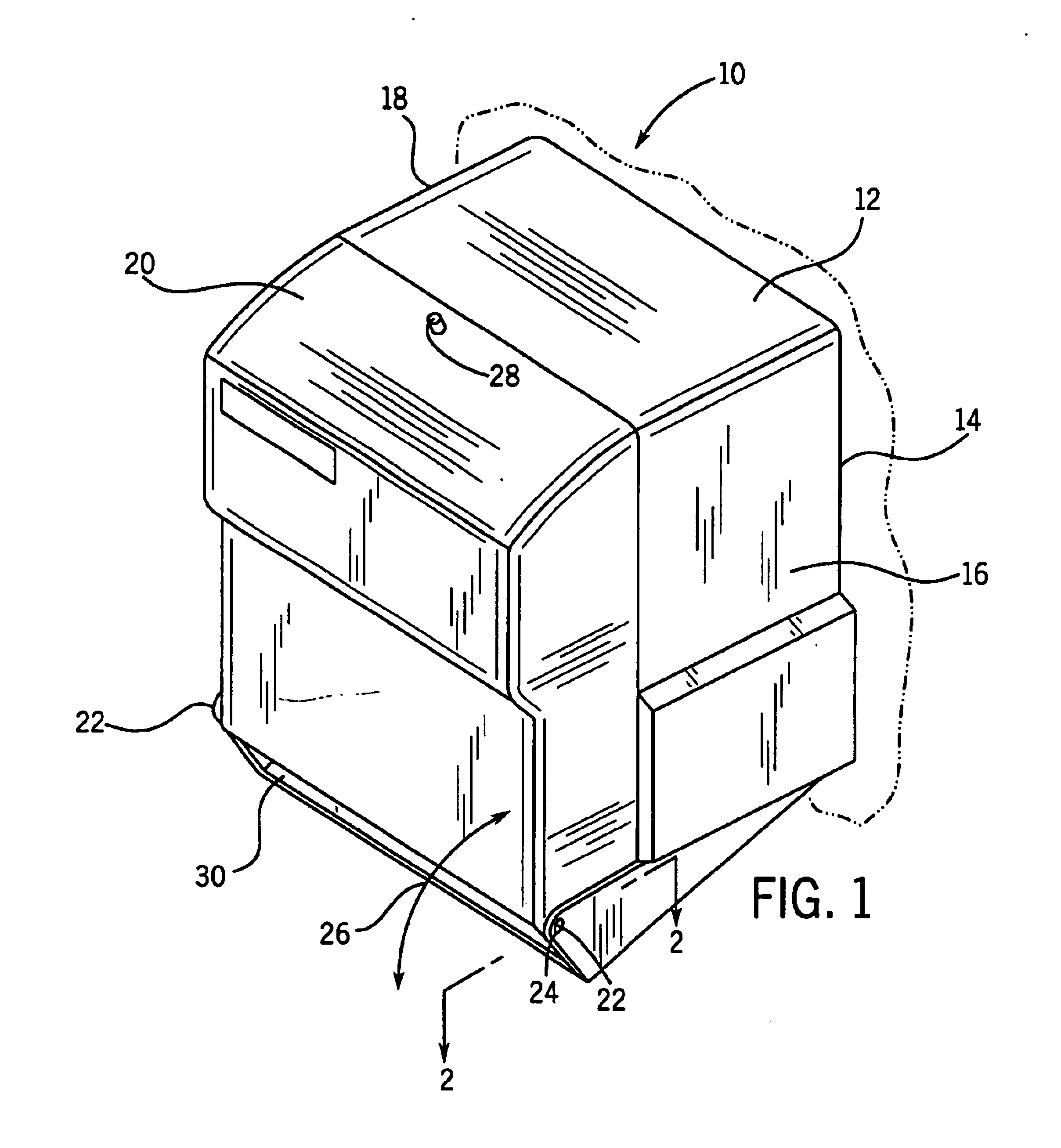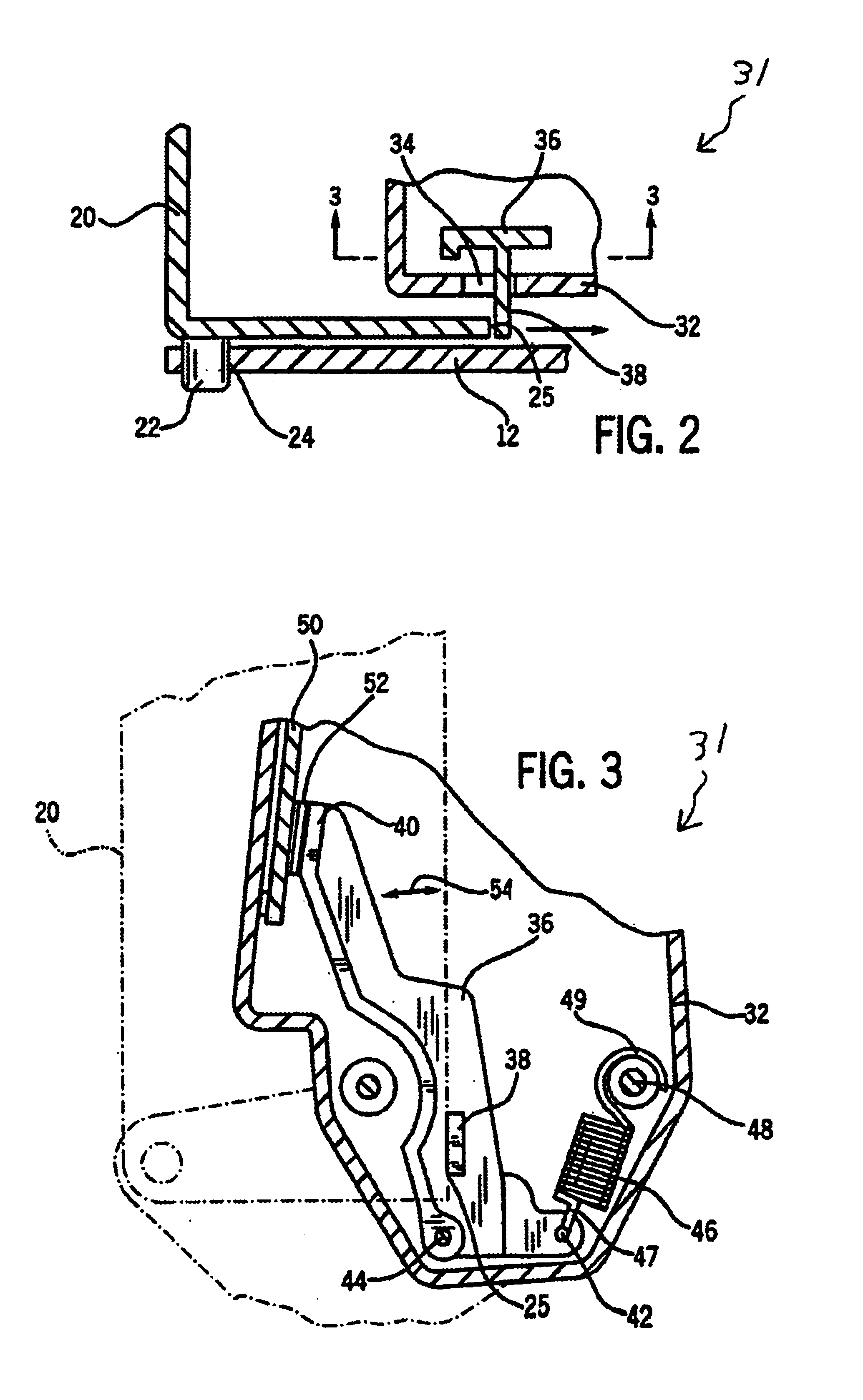Electronically controlled roll towel dispenser with data communication system
a technology of electronic control and data communication system, which is applied in the field of paper towel dispensers, can solve the problems of paper towel waste, paper towel dispensers are not as economical as other types of alternative dispensers, and the number of folded towels will often fall ou
- Summary
- Abstract
- Description
- Claims
- Application Information
AI Technical Summary
Benefits of technology
Problems solved by technology
Method used
Image
Examples
Embodiment Construction
[0042]Referring first to FIG. 1, an electronically controlled paper towel dispenser 10 is shown constructed in accordance with the present invention. The paper towel dispenser 10 includes an outer housing 12 having a back panel 14 adapted to be fastened to a wall, right and left side panels 16 and 18, and a front cover 20. The front cover 20 is pivotally mounted to a lower portion of the housing 12 with hinge pins 22 extending outwardly on each side of the bottom of the cover 20 which are inserted into openings 24 on the bottom front of right and left side panels 16, 18. The front cover 20 is movable between a secured closed position and an open position as illustrated by arrow 26. The cover 20 is securable to an upper portion of the housing 12 by a latch 28 or other fastening device to maintain the front cover 20 in a closed position. The front cover 20 is typically opened for servicing, collecting data, and loading roll paper into the dispenser 10. The roll consists of a continuou...
PUM
 Login to View More
Login to View More Abstract
Description
Claims
Application Information
 Login to View More
Login to View More - R&D
- Intellectual Property
- Life Sciences
- Materials
- Tech Scout
- Unparalleled Data Quality
- Higher Quality Content
- 60% Fewer Hallucinations
Browse by: Latest US Patents, China's latest patents, Technical Efficacy Thesaurus, Application Domain, Technology Topic, Popular Technical Reports.
© 2025 PatSnap. All rights reserved.Legal|Privacy policy|Modern Slavery Act Transparency Statement|Sitemap|About US| Contact US: help@patsnap.com



